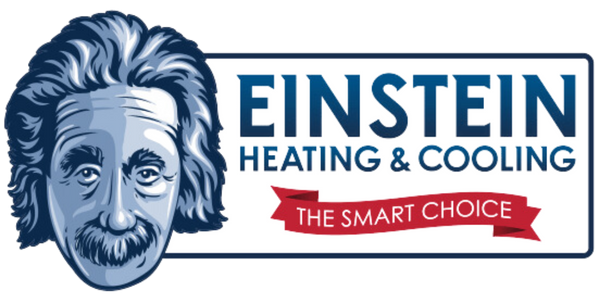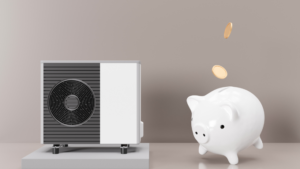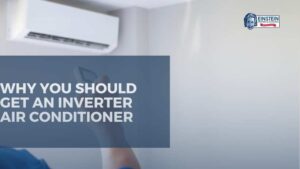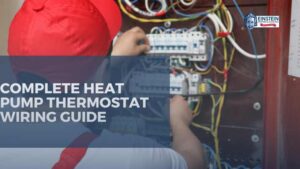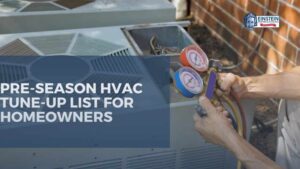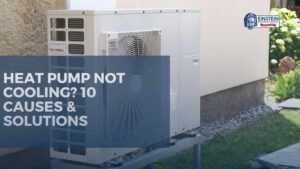When it comes to maintaining a comfortable and energy-efficient indoor environment, HVAC (Heating, Ventilation, and Air Conditioning) systems play a crucial role. Among the various components of an HVAC system, the HVAC return duct is often overlooked, despite being an essential part of the overall functionality. In this comprehensive blog post, we will delve into the significance of HVAC return ducts, exploring various factors that contribute to their importance and efficiency.
1. Purpose of HVAC Return Ducts
HVAC return ducts serve a pivotal role in the air circulation process, contributing to the overall performance and effectiveness of the system. Understanding the key purposes of these ducts is fundamental to optimizing their functionality.
Air Circulation and Balance
The primary purpose of HVAC return ducts is to facilitate the circulation of air within the building. As conditioned air is released through the supply vents into different rooms, return ducts ensure a balanced airflow by retrieving the air that has been circulated and returning it to the HVAC system for reconditioning.
Indoor Air Quality Improvement
Return ducts play a significant role in enhancing indoor air quality. By extracting stale air, pollutants, and dust particles from various rooms, these ducts contribute to maintaining a healthier living environment. The continuous circulation of air through the return ducts helps filter out contaminants, providing occupants with cleaner and fresher air.
2. Factors Influencing HVAC Return Duct Efficiency
The efficiency of HVAC return ducts depends on various factors, each contributing to the overall performance of the system. Examining these factors is essential for homeowners and HVAC professionals alike.
Duct Size and Design
The size and design of HVAC return ducts significantly impact their efficiency. Undersized or poorly designed ducts can lead to restricted airflow, causing the HVAC system to work harder to maintain the desired temperature. Proper sizing and design ensure optimal performance and energy efficiency.
Location and Placement
The location and placement of return ducts within a building are critical factors affecting their efficiency. Strategic placement in central areas allows for better air circulation and balanced temperature distribution. Additionally, avoiding obstructions and ensuring proper sealing are essential considerations for maximizing performance.
Duct Insulation
Proper insulation of HVAC return ducts is crucial for preventing energy loss and maintaining temperature consistency. Insulating the ductwork helps minimize heat gain or loss as air travels through the system, improving overall energy efficiency and reducing the workload on the HVAC equipment.
Air Filter Maintenance
Regular maintenance of air filters in HVAC return ducts is vital for system efficiency and indoor air quality. Clogged or dirty filters can obstruct airflow, leading to increased energy consumption and decreased performance. Homeowners should adhere to a routine filter maintenance schedule to ensure optimal functionality.
Duct Material
The material used in the construction of ventilation return influences their durability, efficiency, and overall performance. High-quality materials resist wear and tear, reducing the likelihood of leaks and ensuring a longer lifespan for the ductwork. Choosing the right duct material is crucial for maintaining an efficient HVAC system.
3. Common Issues with HVAC Return Ducts
Despite their importance, HVAC return ducts are susceptible to various issues that can compromise their efficiency and performance. Identifying and addressing these issues promptly is essential for maintaining a well-functioning HVAC system.
Air Leaks
Air leaks in return ducts can lead to energy wastage and decreased system efficiency. Sealing any leaks promptly helps prevent conditioned air from escaping, ensuring that the HVAC system operates optimally and maintains the desired indoor temperature.
Poor Insulation
Inadequate insulation in return ducts can result in energy loss and temperature inconsistencies. Homeowners should inspect the insulation regularly and address any gaps or damage to enhance energy efficiency and prevent heat transfer.
Improper Sizing
Incorrectly sized return ducts can cause airflow restrictions and uneven temperature distribution. HVAC professionals should carefully calculate the required duct size based on the system’s specifications and the building’s layout to ensure optimal performance.
Blockages and Obstructions
Blockages or obstructions in return ducts can hinder airflow and strain the HVAC system. Regular inspection and cleaning of the ductwork prevent the accumulation of debris, dust, or other particles that could impede the smooth flow of air.
Inadequate Filtration
Using inefficient or clogged air filters can lead to poor indoor air quality and reduced HVAC performance. Homeowners should choose high-quality filters and adhere to a regular maintenance schedule to ensure effective filtration and prevent potential issues.
4. Benefits of Well-Maintained HVAC Return Ducts
Maintaining HVAC return ducts is not only essential for preventing issues but also offers numerous benefits that contribute to a comfortable and energy-efficient living space.
Energy Efficiency
Well-maintained return ducts contribute to energy efficiency by ensuring that the HVAC system operates at its optimal capacity. Proper insulation, sealing, and regular maintenance minimize energy wastage, resulting in lower utility bills and a reduced environmental impact.
Improved Comfort
Efficient HVAC return ducts contribute to a more comfortable indoor environment. Balanced airflow and consistent temperature distribution help create a pleasant living space, ensuring that occupants experience comfort in every room.
Extended System Lifespan
Regular maintenance and care of ac return vent can extend the lifespan of the entire HVAC system. By addressing issues promptly and preventing unnecessary strain on the equipment, homeowners can avoid premature wear and potential system failures.
Enhanced Indoor Air Quality
Effective return ducts play a crucial role in maintaining indoor air quality by continuously circulating and filtering the air. This results in a healthier living environment, reducing the presence of allergens, pollutants, and contaminants.
Reduced Repair Costs
Addressing potential issues early through regular HVAC maintenance helps prevent major breakdowns and costly repairs. Well-maintained heating and cooling system return ducts contribute to a more reliable and resilient system, reducing the likelihood of unexpected failures.
5. Future Trends in HVAC Return Duct Technology
As technology continues to advance, the HVAC industry is witnessing innovations in return duct technology that aim to further improve efficiency, sustainability, and user experience.
Smart HVAC Systems
The integration of smart technology in HVAC systems allows homeowners to monitor and control their systems remotely. Smart thermostats, sensors, and automated duct dampers contribute to more precise temperature control and energy management.
Energy Recovery Ventilation (ERV) Systems
Energy recovery ventilation systems are becoming more prevalent in HVAC designs. These systems exchange stale indoor air with fresh outdoor air while recovering and transferring the energy from the exchanged air. ERV systems enhance overall efficiency by minimizing the need for additional heating or cooling.
Aerodynamic Duct Design
Advancements in aerodynamic duct design focus on reducing air resistance and pressure drops within the ductwork. This enhances overall system efficiency by allowing air to flow more smoothly, minimizing energy consumption, and improving performance.
Sustainable Materials
The use of sustainable and eco-friendly materials in AC return vent construction is gaining popularity. These materials contribute to a reduced environmental impact and align with the growing trend toward green and energy-efficient building practices.
Improved Filtration Technologies
Innovations in air filtration technologies are enhancing the effectiveness of HVAC systems in maintaining indoor air quality. High-efficiency filters with advanced filtration media capture smaller particles, ensuring cleaner and healthier air circulation.
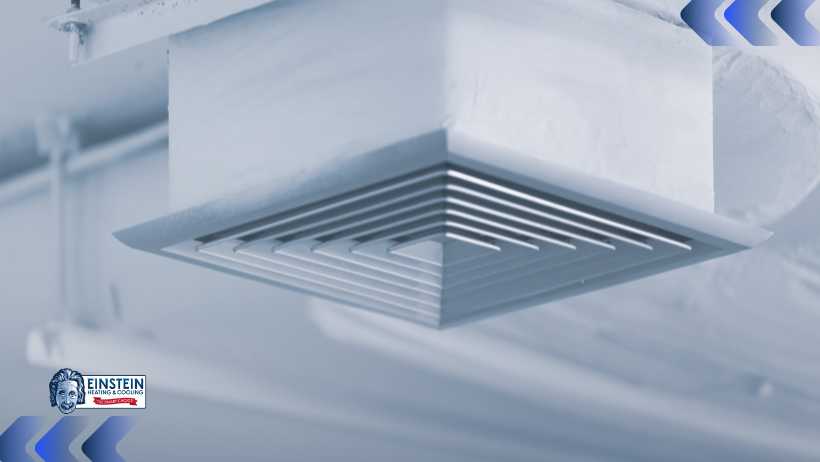
6. Best Practices for HVAC Return Duct Maintenance
To ensure the longevity and efficiency of AC return vents, adopting best practices for maintenance is imperative. By incorporating these practices into a routine, homeowners can mitigate potential issues and optimize the performance of their HVAC systems.
Regular Inspection
Performing routine inspections of HVAC return ducts allows homeowners to identify and address potential issues early on. Look for signs of wear, tear, or damage, and pay attention to any unusual noises during system operation. Early detection and repair by professional HVAC technicians can prevent minor problems from escalating into major repairs.
Professional Duct Cleaning
Engaging in professional duct cleaning services periodically helps remove accumulated dust, debris, and contaminants from the HVAC return ducts. This not only improves indoor air quality but also ensures unobstructed airflow, reducing the strain on the system.
Sealing Leaks and Gaps
Sealing any leaks or gaps in AC return vents is crucial for preventing energy loss and maintaining system efficiency. Use appropriate sealing materials, such as duct mastic or foil tape, to address any points where conditioned air might escape.
Air Filter Replacement
Regularly replace air filters in the HVAC return ducts according to the manufacturer’s recommendations. Clean filters ensure unimpeded airflow and efficient filtration, contributing to improved indoor air quality and system performance.
Temperature Zoning
Consider implementing temperature zoning in your home to optimize HVAC system performance. This involves dividing the house into different zones, each with its own thermostat and HVAC control. By controlling the temperature independently in each zone, you can enhance efficiency and comfort.
7. The Role of HVAC Professionals
While homeowners can perform some maintenance tasks, certain aspects of HVAC return duct care are best left to qualified professionals. Seeking professional assistance ensures that the system receives thorough inspections, repairs, and optimizations.
Regular Professional Inspections
Schedule regular inspections with HVAC technicians to assess the overall condition of the system, including the return ducts. Professionals can identify potential issues that may not be visible to homeowners and provide recommendations for preventive measures.
Ductwork Design and Installation
When constructing a new home or renovating an existing one, enlist the expertise of HVAC professionals to design and install the ductwork, including the HVAC return ducts. Proper design and installation are crucial for optimal performance and energy efficiency.
Ductwork Repairs and Sealing
If there are noticeable issues with the ventilation return, such as leaks or damage, enlist the services of HVAC professionals to perform repairs. Professionals know and tools to seal duct leaks effectively and ensure the integrity of the ductwork.
System Upgrades and Optimization
HVAC professionals can recommend and implement system upgrades to enhance overall efficiency. This may include installing energy-efficient components, integrating smart technology, or upgrading insulation to align with the latest industry standards.
Emergency Repairs
In the event of unexpected HVAC system failures or malfunctions, professionals are equipped to handle emergency repairs. Timely intervention by experienced technicians minimizes downtime and prevents further damage to the system.
8. Environmental Considerations in HVAC Return Ducts
As sustainability becomes a central focus in building design and HVAC systems, considering environmental factors in HVAC return ducts is essential. Incorporating eco-friendly practices contributes to energy conservation and a reduced carbon footprint.
Energy-Efficient HVAC Systems
Upgrading to energy-efficient HVAC systems can significantly reduce the environmental impact of heating and cooling operations. Energy Star-rated systems and those employing advanced technologies contribute to lower energy consumption and decreased greenhouse gas emissions.
Ductwork Insulation Materials
Selecting insulation materials with a lower environmental impact is crucial for sustainable construction. Materials such as recycled fiberglass or cellulose insulation align with eco-friendly practices, providing effective insulation without compromising environmental responsibility.
Smart Thermostats and Automation
Integrating smart thermostats and automation features into HVAC systems enhances energy efficiency by optimizing temperature control based on occupancy and usage patterns. This not only reduces energy consumption but also contributes to a more sustainable and eco-friendly living environment.
Renewable Energy Integration
Consider integrating renewable energy sources, such as solar panels, into the HVAC system. Harnessing solar power for heating or cooling reduces reliance on traditional energy sources, promoting a cleaner and more sustainable approach to home comfort.
Sustainable Building Practices
Adopting sustainable building practices, including proper HVAC system design and insulation, ensures that homes are constructed with energy efficiency in mind. This holistic approach contributes to a greener lifestyle and minimizes the environmental impact of residential structures.
Conclusion
In conclusion, ventilation return is integral to the functionality and efficiency of HVAC systems. By prioritizing the proper design, insulation, and maintenance of HVAC return ducts by the experts at Einstein Heating and Cooling, homeowners can reap the benefits of energy efficiency, extended system lifespan, and improved indoor air quality. Stay informed about emerging trends in return duct technology to embrace sustainable and innovative solutions for a more comfortable and environmentally conscious home.
